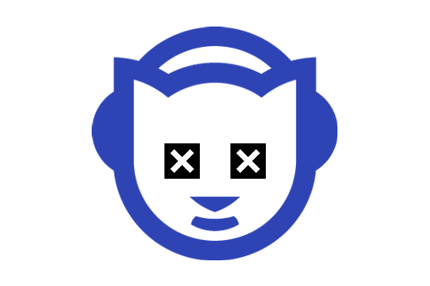This story originally appeared in the May 2000 issue of SPIN.
Napster, the new MP3 file-exchange program, is like a virus. No, wait — a beehive. No,wait — a field of dandelions. A big field of dandelions in a strong breeze. It’s new. It’s hot. It’s the AOL of MP3, so easy to use that even record executives can do it. It’s still in beta! It’s going to change the way you listen to music. Right? Right?
Maybe. Who knows. But it’s very cool. People like it so much it’s getting sued. And banned. By March 1, network administrators at more than 130 universities had pulled the plug on Napster. At Dell Computers, employees in the tech-support department were reportedly using it so much they were giving some coeds a run for their money. The Recording Industry Association of America (RIAA) called Napster “a giant online pirate bazaar” and wants to shut it down. Nonetheless, its fanbase is spreading wildly. To chat rooms. To campuses. To Canada. Napster’s programmers have even spotted users from the Department of Defense. Says a guy who calls himself Pimplicking on NapsterCult, a site that is devoted to obsessive Napster use: “I love Napster so much that it feels like a f—king brick hit me in the head. It’s real technology in action. Napster saved my hopeless life.”
What makes Napster so compelling to so many people? Mostly it’s the way it works. Napster doesn’t store or serve any MP3s from its site; instead it allows users to access the MP3s stored on other users’ hard drives. An extremely organic, extremely viral entity, the Napster network gets better as it gets bigger, because each new user adds something to it. When you run Napster for the first time, you designate a folder on your hard disk as your MP3 library. Then,when you connect to a Napster server, it knows what songs you’d like to share with other users. Once you’re connected, any Napster users can download songs from you, and you can download songs from them; Napster just keeps track of where those songs are. At this point in the Internet’s evolution, that’s almost a heretical — or at least retrograde — concept: users sharing files directly with other users. Still, what makes Napster really compelling to so many people is that other people’s computers are often stacked with not-entirety-legal MP3s.
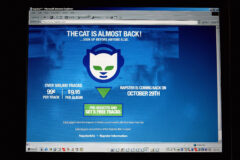
Also Read
WHY SO MANY MUSIC TECH DEALS FAIL
This is nothing new, of course. For years there have been thousands of clandestine FTP sites where you can illegally obtain songs and whole albums of copyright-protected music.But searching for MP3s on the Internet can be a hellish, want-to-stick-forks-in-your-eyes type of experience. Many FTP sites are online only part of the day or limit the number of concurrent users. Others operate as “ratio sites,” requiring you to upload, say, three songs for every one that you download. Napster has simply streamlined the process, offering tons of easy-to-download music in the form of private collections.
In a typical session, a Napster server connects anywhere from 2,000 to 5,000 users. This gives you access to hundreds of thousands of songs. While Napster won’t reveal exactly how many servers it operates, sources put the number at around 140. At the moment, these servers work independently — that is, when you connect to one, you can only share songs with the2,000 to 5,000 other users currently using that server. But Napster is in the process of linking all of its machines, and when that happens, you’ll be able to share songs across the entire Napster network. Imagine the consequences then: 24 hours a day, all around the world, millions of average music fans are suddenly going to be trading songs with the sort of insatiable,obsessive passion generally seen only in Deadheads and indie-rock-seven-inch-collector geeks.
Have you heard of the bubonic plague?
IN 1997, SHAWN FANNING, THEN A HIGH SCHOOL JUNIOR IN HARWICH, MASSACHUSETTS, got his first computer. It was a gift from his Uncle John. At first, Fanning taught himself to program some simple games. Then he started hanging out on IRC, an Internet chat application. There, he spent hours talking about “Internet security issues” with IRC regulars, especially a teenage programmer from Virginia named Sean Parker. “We weren’t hackers,” Fanning says quickly, sitting with Parker in the conference room of Napster’s headquarters in San Mateo, California.
“Absolutely not,” Parker says. “We were white hats.”
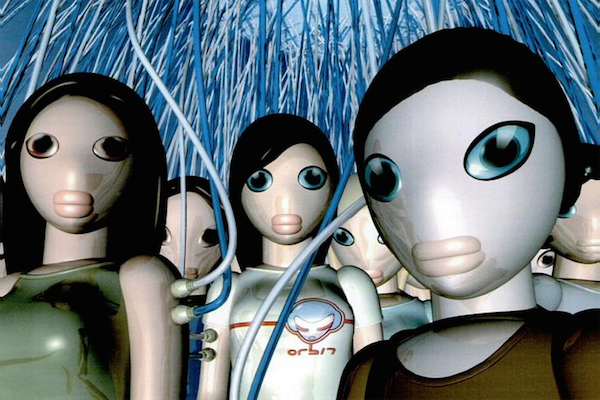
Only 19 now, Fanning is low-key but focused, with an ever-present University of Michigan baseball cap covering his dark, closely cropped hair. Parker, 20, is more animated. Fidgety and rosy-cheeked, wearing gray dress slacks and a shirt and tie, he looks something like a Blink-182 member pretending to be a Mormon missionary. They both like Mazda RX-7s. Fanning has two of them with an eye on a third: Parker has only one, but it boasts a state-of-the-art Rockford Fosgate audio system complete with a retractable video screen and 186 pounds of speakers in the trunk. His tastes in music run from trance to Dave Matthews. Fanning likes electronic, hip-hop, and older stuff. A month or so before he moved to California last summer he bought the Led Zeppelin box set: when he realized he’d left it behind, he bought it again.
Despite such dedicated patronage, the record industry has little love for Fanning. He is, after all, the man who invented Napster. It started in his dorm room at Boston’s Northeastern University in 1998. Bored by his introductory computer-sciences courses, he looked to find a more challenging project. “My roommates were MP3 fanatics,” he says, “I heard them complaining all the time about how hard it was trying to find songs using search engines like VlP3.lycos.com and scour.net.”
After thinking about the problem for a while, Fanning came up with a much better way to find MP3s on the Net. “I knew it was a great idea,” he says, an idea as potentially big as ICQ or Hotmail. Unfortunately, when he explained his concept to his friends, none of them showed much interest.” After a while, I sat down and started writing it myself,” he says, “But I didn’t have any experience designing graphic interfaces.” He had to buy a book to finish the program.
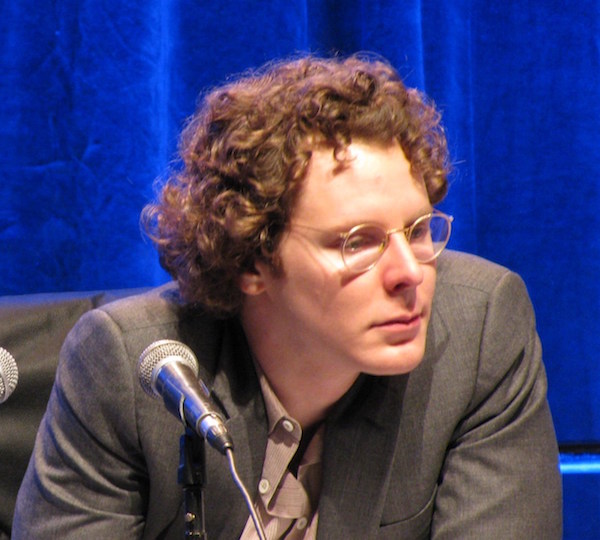
Working out of space in his uncle’s office, Fanning eventually got the program up and running, and very quickly it started attracting thousands of users. To meet the demands of maintaining and improving Napster (whose name comes from an old junior high school nickname of Fanning’s), he enlisted the help of Parker and Jordan Ritter, another programmer he knew from IRC. Not long after, he stopped attending classes.
A few months later, as interest in Napster continued to build. Fanning’s uncle introduced Fanning and Parker to Eileen Richardson, a Boston-based venture capitalist who’d spent the last decade working with various high-tech start-ups. Napster’s combination of music and the Internet, two of her biggest passions, immediately captured her interest.
“In the early ’90s, I was a huge house-music fan,” says Richardson, who’s possibly the only former venture capitalist in the world who has purple-tinted hair and wears neon pink shirts to work. “But it was hard to find here then, so I used to fly to Amsterdam for the weekend to go to the clubs and hear the new music and DJs.” Convinced that Napster could introduce new music to similarly enthusiastic fans who didn’t have her travel budget, Richardson invested in the company and signed on as its interim CEO.
Last summer, Napster relocated to San Mateo, California. There, it occupies the kind of cluttered, disheveled offices that give fortune-sniffing venture capitalists nipple hard-ons. Plants are wilting, the furniture doesn’t match, empty cans of Red Bull decorate the premises: There’s no time for anything except work, work, work. Fanning keeps a guitar and a basket ball in his office but hasn’t touched them in months. Remarkably, he and Parker are now mid-level grunts who have to answer to more experienced coworkers. At the moment, his boss is mad at him: So many publications have been requesting interviews from him lately that it’s cut into his coding time.
But requests keep coming, because Napster users are so hooked. One legendary user built a library of 15,000 songs: another amassed a staggering 17 gigabytes of music. An architect who lived 30 miles away showed up at the offices one day simply because he wanted to meet the people who’d created Napster. When the company cosponsored a rave that attracted thousands of people to an Oakland warehouse, its booth was swarmed by devoted fans. “It’s seriously addictive.” says John Perkins, who feels so strongly about the program he created the NapsterCult website. “I was away from my computer for a couple weeks, and it was hard to take: it was like going through physical withdrawal.”
And then, of course, there are the most impassioned testaments to Napster’s appeal. Last December, the RIAA filed a lawsuit against the company. Charging Napster with “contributory and vicarious copyright infringement,” it wants S100,000 in damages for each copyrighted work that is infringed. By early 2000, colleges all across the country started to block Napster in an effort to control skyrocketing bandwidth consumption on their networks. At Indiana University, for example, Napster took up ten percent of network resources in November and 50 percent by January. When the campus newspaper announced the impending Napster ban, usage shot up more than 60 percent as students rushed to download as many songs as they could before the service was cut. At Oxford University in England, Napster was proving especially costly. “Oxford gets charged per byte for transatlantic network use,” says Nick Sweeney, a graduate student there. “So it actually would have been less expensive to buy the students the CDs themselves.”
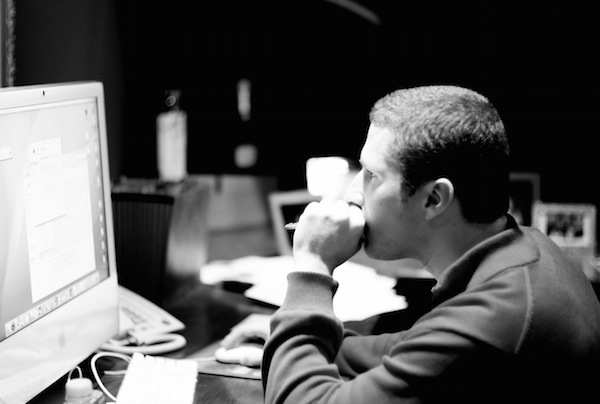
In the wake of such crackdowns, students fought back. At USC, they demanded a meeting to craft a compromise. At Indiana University, sophomore Chad Paulson organized Students Against University Censorship to protest the unilateral Napster ban. “If another program gets that popular, are they going to ban it too?” asks Paulson, who liked to use Napster to distribute authorized MP3s from labels like Up Records, Dischord, and Kill Rock Stars. “I invited Krist Novoselic to attack this. I’m not sure where he stands on the issue, but I think it’s something he could really sink his teeth into.”
WITH ENEMIES LIKE THE RIAA AND THE CAMPUS BANDWIDTH POLICE, who needs a marketing department? Each time someone tries to stop Napster, its buzz just gets louder. But if Napster didn’t make it so easy to get illegal copies of copyright-protected songs, would it really be so popular? Ask interim CEO Eileen Richardson why users find Napster so appealing, and she talks about community, discovering new music, and Napster’s potential for helping new and unsigned bands find an audience. Hence, the next version of Napster, the first official release, will feature more community-oriented functionality, including instant messaging, user-created chatrooms, and ways to spotlight new artists.
But for some Napster users, it’s clearly about getting songs they might otherwise have to pay for. “The radio only plays certain songs, and sometimes I don’t want to buy the whole CD,” says Nancy Perschbacher, a student at the University of Pennsylvania. “Now I can just go get it.”
At $100,000 per illegal download, the size of the RIAA lawsuit would be astronomical. So will the RIAA be able to shut down Napster? Probably not. After all, Napster’s users trade files among themselves. “We never handle any MP3 content ourselves,” Fanning explains, “Napster just links two people together.” At the same time, Napster does warn users that trading unauthorized files is illegal. Beyond that, the company maintains, it has no control over how people use its service. The Digital Millennium Copyright Act (DMCA), passed by Congress in 1998, reinforces Napster’s position: It offers “safe harbor” to online sender providers from copyright-infringement claims that arise from the activities of their users. To comply with the DMCA, Napster has posted a notice on its website that promises to “respond expeditiously to claims of copyright infringement committed using the Napster service.”
If someone does make such a claim, he or she will have to prove an act of copyright infringement actually took place. And at the moment, there’s no easy way to do this, because MP3 files themselves aren’t intrinsically illegal. Anyone who owns a CD can make a legal copy of it, and MP3 files are one potential way to do that. So if both parties in a Napster-facilitated file exchange own tire CD in question, has an infringement occurred? Are copyright holders going to examine the CD collections of everyone who uses Napster? Is Napster itself supposed to do this? The courts have essentially already ruled that a consumer’s right to make legal copies of something through a new technology outweighs that technology’s potential threat of piracy. (That’s why VCRs and CD burners. both unsuccessfully challenged in court as tools of copyright infringement, are legal.) Ironically, some see Napster as an antipiracy tool. “The thing that’s not obvious to most people who use Napster is that it basically says who has what music posted where,”says Gene Hoffman Jr., CEO of digital music site EMusic. “If you’re a label and you want to stop people from illegally using your stuff, you go on Napster to find out who’s distributing what.”
But all of that may be missing the point. The sort of frenetic music-sharing that happens on Napster is much different than traditional music piracy, so maybe the RLAA should consider it viral marketing instead of a crime. “Right now, the record industry is a $40 billion business,” Richardson says, “But we truly believe it’s going to turn into a $100 billion business. And the way that’s going to happen is that more people are going to get exposed to more artists.The RIAA needs to admit, ‘Hey, we don’t understand what’s going on hereon the Internet. Maybe we should try to work with the people who do.’ ”
In fact, Napster’s future basically depends on such hopes. As hot as Napster is, it currently has no revenues, much less profits. And as it develops a business model, its most obvious potential revenue streams come from more traditional enterprise. “We’re choosing a partner today to sell albums through the site,” says Richardson, eager to prove that Napster will increase record sales rather than cannibalize them. And plenty of fans insist that this is exactly how they use the site. “I’ll listen to a few tracks before I decide to buy the CD,” says Jonny Gerow, a Napster user from Tampa, Florida, who used to run his own MP3 download site until Time Warner shut it down.
“I want liner notes: I want a tangible good. I want to own the physical CD.”
But who are there more of? The Napster fans who will end up spending more on music because of the program, or the ones who will spend less? Right now, the future of the record industry is so wide open, no can really predict how it will all sort out. In fact, what’s really revolutionary about Napster is that it’s not just the traditional record industry that it threatens.”Traffic on the MP3 search engines has definitely gone down since Napster came out,” says a source who works at one of the oldest MP3 portals.”It used to be all about scour.net, but not anymore. That’s why you see other sites scrambling to develop Napster-like applications of their own.”
In other words, any company involved in music distribution and aggregation — record labels, MP3 portals, even Napster itself — grows more dispensable as individuals equip themselves with an increasing number of tools to collect and disseminate digital information to each other. Already there’s a public-domain version of Napster called OpenNap — anyone who wants to can use it to run their own Napster-like file-exchange service. CuteMX, iMesh, andSwapstation.com are available too. (Along with MP3s, these programs allow you to find and exchange all sorts of file types — which intensely scares anyone who traffics in intellectual property. Soon, the TV, movie, and porn industries may be filing lawsuits of their own as Napster-style applications are used to brazenly distribute everything from bootleg copies of The Simpsons to term papers and class notes.) So what if the RIAA’s lawsuit effectively shuts down Napster? Or what if, in the process of commercializing its service.Napster itself makes changes its users don’t like? With so many easy new ways to find MP3s on the Web, it probably doesn’t matter.
Sooner or later, the record industry may actually decide that Napsterdoes offer the best way to reach music fans in the increasingly decentralized world of online music. In the meantime, users intuitively understand the application’s appeal. “Napster sent us all into a musical renaissance atwork,” says Allison Garber, a Web designer who works in New York City. “It spread like wildfire, bringing back memories of making mix tapes in sixthgrade. But now it’s digital; now it’s quick and easy and global. It sure beats sitting by the radio with a tape recorder waiting for that song to come on so I can make my gritty recording.”
The radio?

